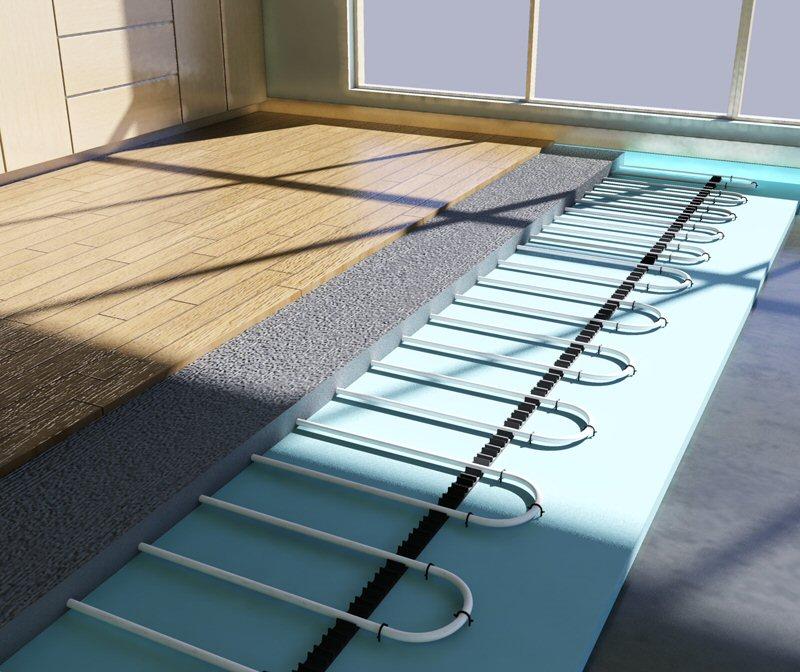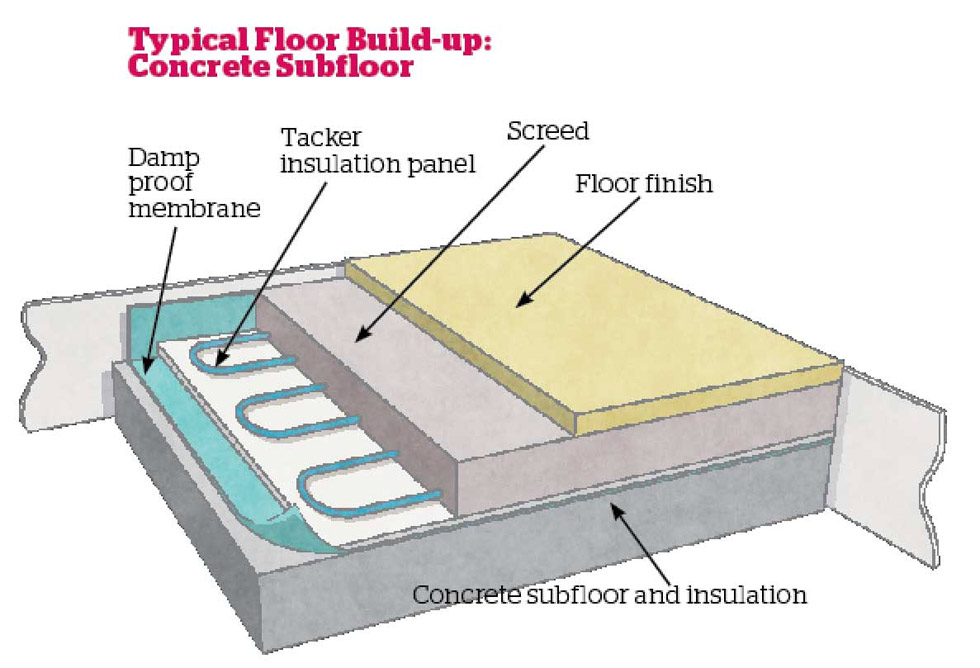Imagine walking into your home on a chilly winter morning, only to be greeted by the warm embrace of a perfectly heated floor beneath your feet. That dream can become a reality, even if you’ve chosen the timeless charm of a wooden floor. It’s a scenario that begs the question: can underfloor heating and wooden floors coexist harmoniously?

Image: www.thefloorheatingwarehouse.co.uk
The answer is a resounding yes! Underfloor heating, when expertly installed, complements wooden floors beautifully, transforming your home into a haven of warmth and comfort. But understanding the nuances of this pairing is key to ensuring a successful and satisfying outcome. This guide delves into everything you need to know about underfloor heating with wooden floors, empowering you to make informed decisions and achieve the ambiance of your dreams.
Laying the Foundation: Understanding the Basics
Underfloor heating systems operate by circulating warm water or electric currents beneath the floor surface, gently radiating heat upwards. This creates a pleasant, even warmth, unlike traditional heating systems that rely on hot air and can lead to uneven temperature distribution.
Wooden floors are renowned for their natural beauty and warmth, but they also possess unique characteristics that must be considered when incorporating underfloor heating. The type of wood, its thickness, and the installation method all play a crucial role in determining the suitability of the floor for underfloor heating.
Matching the Perfect Pair: Compatibility Considerations
Not all wooden floors are created equal, and their compatibility with underfloor heating varies. For instance, solid wood floors, with their greater thickness, can be more challenging to install with underfloor heating than engineered wood floors. This is because solid wood requires greater thermal conductivity to allow heat to transfer efficiently through the material.
Engineered wood floors, on the other hand, are a popular choice for underfloor heating due to their thinner construction and composite layers that enhance thermal conductivity. The top layer of engineered wood, which is the visible surface, can be made from a wide array of wood species, allowing homeowners to choose the perfect aesthetic for their space.
Making the Right Choice: Types of Underfloor Heating Systems
The decision of which underfloor heating system to choose depends largely on your specific needs and preferences. There are two main types of underfloor heating: water-based and electric.

Image: www.homebuilding.co.uk
Water-Based Underfloor Heating
Water-based systems utilize a network of pipes embedded within a concrete screed layer laid over the subfloor. Warm water is circulated through these pipes, transferring heat to the concrete and then radiating it outwards to the floor surface. This method is known for its efficiency and cost-effectiveness, especially over longer periods. Its initial installation cost, however, is higher compared to electric underfloor heating.
Electric Underfloor Heating
Electric underfloor heating systems operate using electrically heated cables or mats installed directly beneath the floor covering. They offer greater flexibility as the installation process requires minimal disruption to the existing subfloor. This makes electric systems a popular choice for renovations or areas where access to the subfloor is limited.
While initial investment costs for electric systems are generally lower, their long-term running costs can be higher than water-based systems.
Understanding the Installation Process
Installing underfloor heating with wooden floors is a specialized task best left to experienced professionals. The installation process involves several crucial steps, including:
- Subfloor Preparation: The subfloor must be level and free from any unevenness, cracks, or moisture issues. This ensures that the underfloor heating system sits securely and functions optimally.
- Installation of Underfloor Heating System: The water-based or electric system is installed according to industry standards, ensuring proper insulation and protection.
- Laying the Flooring: A suitable underlayment is installed to provide cushioning and support for the wooden floor, while also ensuring adequate heat transfer. The wooden floorboards are then laid over the underlayment, using the recommended installation methods for your chosen flooring type.
- Testing & Commissioning: The underfloor heating system undergoes thorough testing and commissioning to ensure its correct operation and optimal performance.
Expert Recommendations: Tips for Success
To ensure a seamless and successful underfloor heating installation with wooden floors, consider these expert recommendations:
- Consult a Qualified Installer: Seek out a qualified and reputable underfloor heating installer with extensive experience working with wooden floors.
- Choose the Right Insulation: Proper insulation under the underfloor heating system significantly enhances efficiency and reduces energy consumption.
- Select Suitable Floorboards: Choose wooden floorboards with a high thermal conductivity, allowing heat to transfer efficiently from the underfloor heating to the room.
- Consider the Underlayment: The underlayment plays a crucial role in heat transfer and cushioning, so select one specifically designed for use with underfloor heating.
- Maintain Optimal Temperatures: Ensure the underfloor heating system operates at the correct temperature for your wooden floor type to avoid warping or damage.
Beyond the Basics: Enjoying the Benefits
Underfloor heating with wooden floors offers numerous advantages, creating a more comfortable and energy-efficient living environment.
- Comfort & Warmth: Underfloor heating provides a gentle, even warmth throughout the room, creating a cozy and inviting ambiance.
- Floor Space Maximization: By eliminating bulky radiators, underfloor heating liberates floor space, allowing for more flexible furniture arrangements.
- Energy Efficiency: Underfloor heating systems typically operate at lower temperatures than traditional radiators, resulting in significant energy savings.
- Dust Reduction: Underfloor heating systems reduce air movement, minimizing dust circulation, creating a cleaner and healthier environment for allergy sufferers.
Can You Have Underfloor Heating With A Wooden Floor
Conclusion
Integrating underfloor heating with wooden floors is a combination that delivers both beauty and functionality. With careful planning, expert installation, and mindful operation, you can create a comfortable, energy-efficient, and beautifully styled living space that you can enjoy for years to come. Remember, by choosing the right type of underfloor heating, selecting suitable flooring, and seeking professional guidance, you can create a harmonious pairing that will transform your home into a sanctuary of warmth and style.






